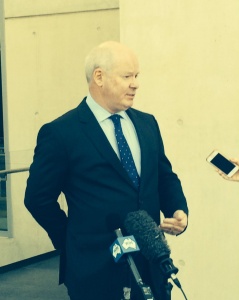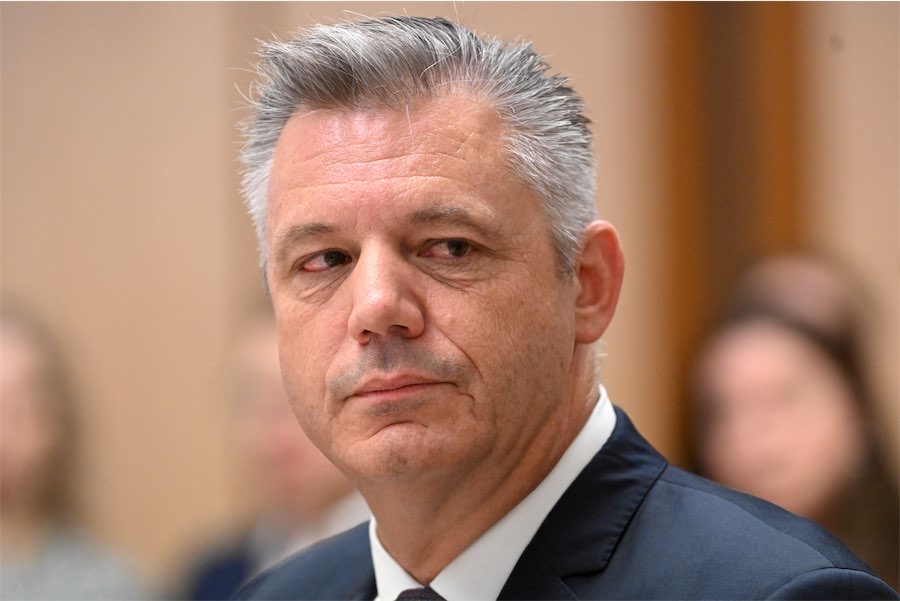AT a surprise press conference this morning, the director of the National Gallery of Australia, Gerard Vaughan, announced that the gallery had negotiated a settlement for an ancient Indian Buddhist sculpture in its collection.

sculptures, red sandstone
Dr Vaughan told the assembled media that, through its recently-formed Asian Art Provenance Research project, the NGA had determined that the ownership history of the second-century sculpture “Seated Buddha” was unclear. They had subsequently been able negotiate a settlement with the Nancy Wiener Gallery of New York, from whom the sculpture had been originally purchased.
The NGA”) and the Nancy Wiener Gallery Inc. will voluntarily donate an ancient sculpture, a Seated Buddha, to India. The NGA purchased the red sandstone sculpture from the NWG in 2007 for AU $1,266,268.00 (approximately equivalent to US $1,080,000 in 2007). The work, from the Mathura region of Uttar Pradesh, was made during the Kushan period (2nd century BCE-3rd century CE).
In a separate statement the Attorney-General and Minister For The Arts, George Brandis, congratulated the gallery on its “commitment to sustaining a national art collection that meets high ethical and international standards,” and himself on having released last year “The Australian Best Practice Guide to Collecting Cultural Material”, which outlines key principles and legal obligations that apply to collecting institutions when acquiring or borrowing cultural material.

Meantime at the gallery, Vaughan announced that former High Court Judge, Susan Crennan, had been appointed as an independent reviewer of the project to evaluate the research on each work of art and management’s recommendations, and make a determination as to whether artworks in the Asian collection conform legally and ethically to Australian and international laws and guidelines.
“I see this as positive, there is clarity”, Vaughan commented.
Describing the negotiations with the Nancy Wiener Gallery as “a win-win situation,” Vaughan said that negotiations had been cordial. “They sold the work in good faith and we bought it in good faith.” He said they would be receiving the uninflated 2007 price in refund, amounting to just over $1 million.
The intention at present, after consultation with one of the donors to the purchase, Roslyn Packer, would be to buy another work of art for the Gallery – very likely a contemporary work. “Ros doesn’t want the money back,” he said.
As for the process of reviewing, it would be “one step at a time.” Vaughan said. Presently they were looking at 54 works, of which 18 from from Southeast Asia have recently been added. With 5,000 works in the entire Asian collection, it won’t happen within six months or a year.
Asked why the process was taking so long, Dr Vaughan explained the one complication around the world was the proliferation of “orphan objects,” acquired by museums and galleries in former times without any knowledge of where they came from.
“It would now be unthinkable not to research such information,” said, describing the NGA as “an ethical institution.”
He agreed that some galleries around the world were not taking the same care over issues of provenance, but that because of the NGA’s recent practice of building up the Asian collection it had been placed under the spotlight.
In the past decade, such questions had been brought to light around the world and been subjected by the public to more rigorous questioning. During the previous decade, the question of artworks looted by the Nazis was more to the fore and that had “segued’ into the present matter. Dr Vaughan confirmed that there is no intention to continue collecting in this area for some time.
The NGA, he said, was putting out an appeal to the “whole world” to help with information. Members of the public, including tourists who may have seen ancient statues and photographed them, are invited to participate, details at nga.gov.au/collections/asia .
Who can be trusted?
In a world of spin and confusion, there’s never been a more important time to support independent journalism in Canberra.
If you trust our work online and want to enforce the power of independent voices, I invite you to make a small contribution.
Every dollar of support is invested back into our journalism to help keep citynews.com.au strong and free.
Thank you,
Ian Meikle, editor




Leave a Reply